A Closer Look: Beyond Gender and Genre
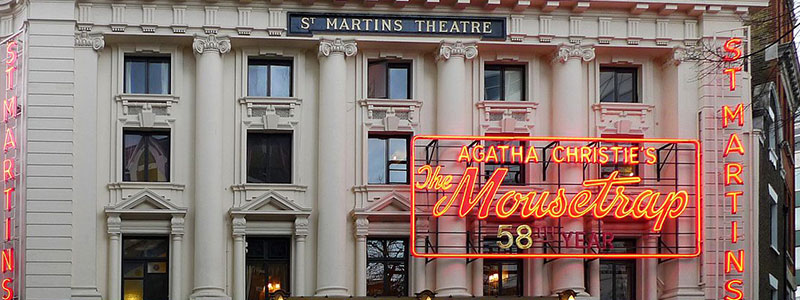
The Mousetrap by Agatha Christie is the longest continuously running play in the history of commercial Western theater, having officially opened in London on November 25, 1952, in a production that, after more than 28,000 performances, runs to this very day. Christie wrote her first version of the story on a commission from the BBC for a new radio play to honor the 80th birthday of King George VI’s mother, Queen Mary, in May 1947. Titling it Three Blind Mice, she reworked the script into a novella, published in Cosmopolitan in 1948, then wrangled it back into a play, expanding it to its current length. Before it opened, she renamed it The Mousetrap in a winking reference to the play-within-a-play in Hamlet.
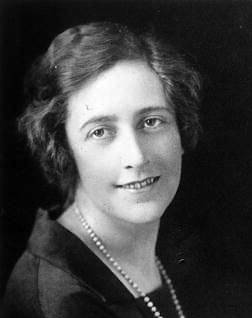
Agatha Christie, 1925
Box-office records for The Mousetrap have done little to secure Agatha Christie critical esteem. In venerable precincts of established criticism and scholarship, Christie’s works, more often than not, have been written off, even derided, as middlebrow, formulaic, conservative, or just for fun. Alison Light calls attention to the unusual intensity of this animus in her landmark book Forever England from 1991: “There is something about Agatha Christie… which seems to mark her out for an especially cold shoulder and the particularly gratuitous insult. It may be respectable to write about Conan Doyle or even Raymond Chandler but Christie remains beyond the pale, the producer of harmless drivel, an unsuitable case for a critic.”[1] A decade later, Susan Rowland echoes Light’s observation in her book about British women writers of detective fiction, noting that, despite having “enchanted millions of readers,” there has been an “inverse relationship” between the enormous popularity of these women writers and the serious critical attention they’ve been given.[2] Rowland sees this lack of engagement with such profoundly influential works as simply “astonishing,” and she expresses mystification at “the refusal to treat these authors as literary artists.”[3] Critical disregard for Christie’s plays has been even more glaring than for her novels. Her contributions to the theater are mostly elided in canonical histories and anthologies of the 20th-century British stage or are, at best, addressed with a quick, embarrassed mention of her work en passant.[4] Theater scholarship would seem to either discount her as a populist interloper or apologize for her as not really a playwright. For their part, scholars of detective fiction who actually do take her writing more seriously tend to brush past her plays, waving them off as ungainly, embodied adaptations of novels that are really best read at home.[5]
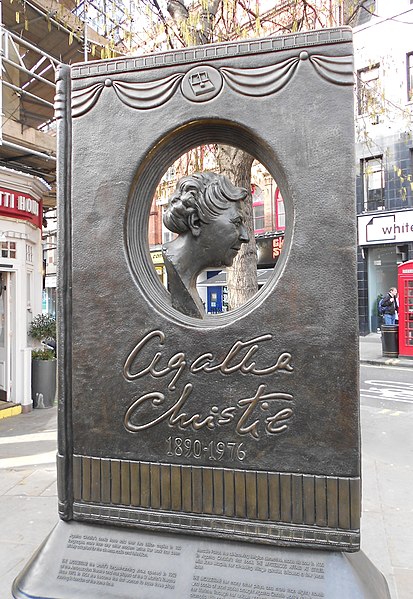
A plaque memorializing Agatha Christie in London’s West End.
Even so, Christie’s achievements in the theater are nothing short of monumental. She wrote more than 20 plays, and she is the only woman to have ever had three plays running simultaneously on London’s West End.[6] The Mousetrap alone has been presented in 50 different countries and in 27 languages.[7] Agatha Christie is, in the summation of theater producer Julius Green, “the most successful female playwright of all time.”[8] Such accomplishments demand “more complex explanations than that people like a good yarn, or a neat puzzle,” to quote Christie scholar Gillian Gill,[9] and the cultural significance of Christie’s theatrical output deserves serious consideration, free from biases related to gender or genre. Denying that true artistry and literary excellence have played a role in Christie’s prodigious success is mere fatuousness, or else insufferable elitism. Like all masterly playwrights, Christie was an astute observer of people, and she crafted a unique style of dialogue with idiosyncratic rhythms that were hers alone. She was a sophisticated chronicler of the rapidly changing world around her, and built into her stories are morally nuanced cultural commentaries. The genre that she came to define, the English country house murder, in which staid, upper-middle-class comfort is shattered by violence and mayhem, offered Christie the perfect vehicle for tapping into social anxieties that circulated all around her, about class, desire, gender, nationhood, and justice. Devoted readers like cultural historian Jacques Barzun and poet W. H. Auden have held her stories up as classical parables that speak to deep-seated, inarticulable fears and yearnings of her readers and audiences.[10] This ability of popular art to “tap into the collective unconscious,” Gill argues, is what makes stories like Christie’s so compelling to us, and so irresistible.[11] In a word, there’s no shortage of meaningful ideas to explore in Christie’s canon, and the presumption that her worlds are straightforward or simplistic is a miscalculation that we perpetrate at the expense of our own enrichment. If Christie’s stories teach us anything at all, it’s not to trust appearances, and we’d do well to apply that same lesson to how we approach her mysteries, which comprise so much more than just cozy puzzles. Diligently and unassumingly, Christie created strands of narrative that needled away at tensions and sinister frustrations underpinning her social fabric, and nowhere perhaps more so than in The Mousetrap.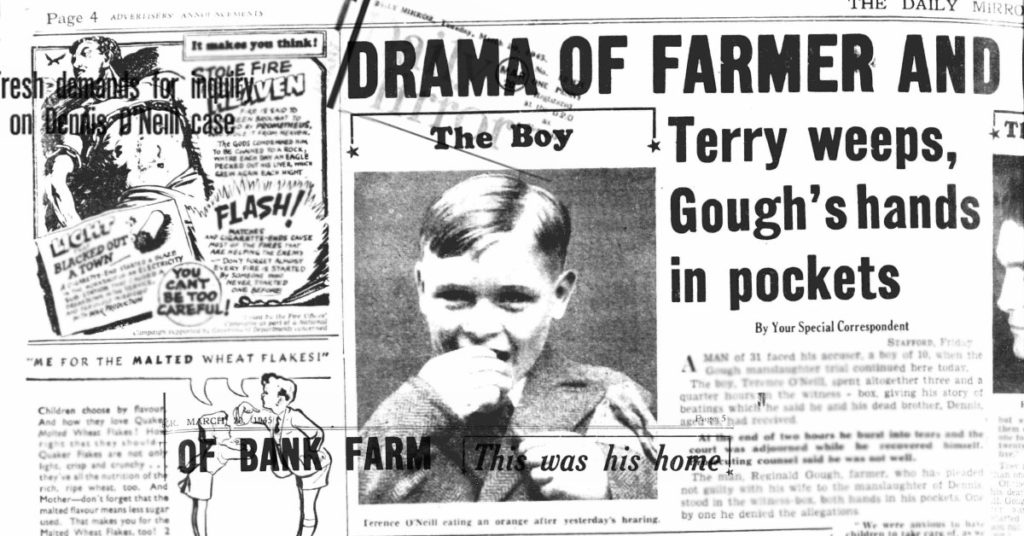
The kernel for the story is an actual event that Christie lifted from the headlines of 1945. The previous summer, 12-year-old Dennis O’Neill and his brother Terence, soon to turn 10, were placed in the foster care of Reginald Gough and his wife Esther on their farm in a remote valley of Shropshire. Bank Farm was an expansive, 70-acre property that the O’Neill boys were forced to work, milking the cows and tending the other livestock. While there, the boys were only ever allotted two to three slices of bread to eat per day, and they were whipped on their open palms for the slightest infractions. When winter came, they were made to strip naked and sprint across the snow-blanketed yard to go bathe in the animals’ icy watering trough. As the boys’ hunger grew more desperate, they took to furtively eating cow feed, and in one especially heartbreaking incident, Dennis was so starved that he lowered himself beneath the udder of a milking cow to to secure nourishment. On the night of January 8, 1945, Mr. Gough punished Dennis for not gathering enough dry firewood. He tied the child, naked, to a bench that was used for slaughtering pigs, and he savagely beat him. As the brothers huddled together in their bed later that night, Dennis lay in so much pain that he was unable to stifle his sobbing. Demanding that the boy keep quiet, Gough burst into their room and punched Dennis’s emaciated body repeatedly with the full weight of his 31-year-old fist. Dennis O’Neill was pronounced dead the next day from acute heart failure caused by blows to the chest.[12]
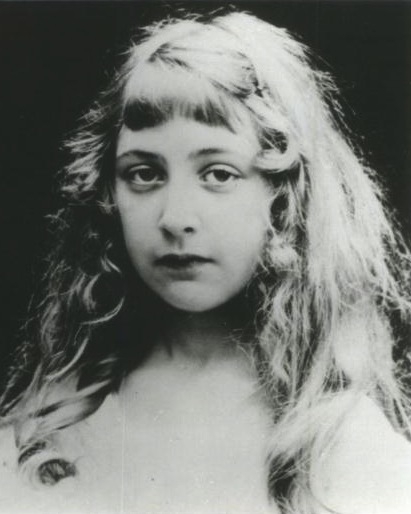
Agatha Christie as a child.
The Bank Farm case made front-page news in early 1945, as a horrified nation tracked the breathless coverage of the Goughs’ trial alongside headlines like “‘Massacre’ on the Rhine” and “Nazi Purge Coming.”[13] Anguished, soul-searching editorials flooded the pages of newspapers, with writers demanding accountability and begging to know how, on the home front, any such slaying could happen. Abiding concerns over the welfare of working-class children like the O’Neills fueled public outrage, at a moment when foster care itself was already a lightning-rod issue. More than two million British children had been evacuated from sites deemed vulnerable to bombing during the war, and those children were scattered throughout the English countryside, living in foster situations with perfect strangers under the aegis of the same government machinery that allowed Dennis O’Neill to die. The day the Goughs were found guilty and sentenced to prison, the judge expressed utter indignation that their abuse happened “not in a slum, not in a hovel, but in a farm in our countryside in England.” Turning to Reginald Gough, he stated simply, “Your behaviour has shocked the world, has shocked England.”[14]
The tragedy of Dennis O’Neill deeply moved Agatha Christie, who, already upon reading about it in the news, set to work formulating the story that later became The Mousetrap.[15] In the play, the Bank Farm case becomes “the Longridge Farm case,” though audiences in 1952 knew what Christie was referring to. The play offers a response to that harrowing event by laying bare the inadequacies of important institutions that Britons feared were collapsing around them. Marriage, the family, the judiciary, the police, the educational system—all are interrogated in some way by the people of the play, and the soundness of these systems is found to be deficient. It’s not merely out of comedic snobbishness that we hear Mrs. Boyle say, “This country has gone sadly downhill.”[16] Certainly, many in the play’s opening night audience agreed, and the fact that Dennis O’Neill tragically died in the way that he did was seen as evidence that the country was in shambles.
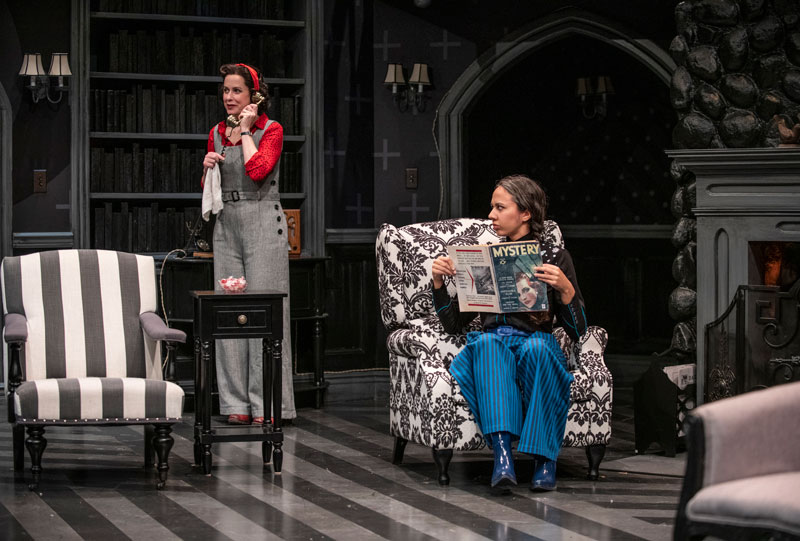
Kate Fry and Tina Muñoz Pandya in THE MOUSETRAP. Photo: Michael Brosilow.
At the same time, The Mousetrap implicates all of us in the breakdown of social safeguards and shared compassion that made the death of a child like Dennis O’Neill possible. As we hear Detective Trotter say, “One might almost believe that you’re all guilty by the looks of you.”[17] The play’s designed to work on our sense of collective guilt—“We must have done something,” Mollie says[18]—and Christie preys on our gnawing dread that the supports which failed the vulnerable before may yet fail them again, either because we’ve chosen to run away from our own complicity, or because we’ve turned our backs on it and willed ourselves to move on. For The Mousetrap, this is a central proposition: when we refuse to face up to the role that we’ve played in the collapse of our communal responsibilities, we are haunted and hunted by those who’ve been hurt by our negligence. And the dangers of our negligence are matched only by the dangers of our bias. Christie offers us ample room to indulge myopic assumptions about the people around us, only to pointedly turn those assumptions against us, and show us what heels we are for having held those assumptions in the first place.
The recurring references to macabre nursery rhymes in the play leave the audience a breadcrumb trail back to the fairy-tale cruelty of the Goughs on Bank Farm, and out of that nightmarish landscape the characters struggle to find a path that puts childhood behind them once and for all. “You’ve got to grow up some time,” we hear Mollie say to Chris. “You can’t go on being looked after all your life.”[19] Artfully, Christie poses these questions about responsibility, complicity, and adulthood within the framework of the theater’s space of play, where actors make believe and audiences sit together for story time in trusting wonder. But the theater is also a space of ritual, where we gather as a community to experience collective reckonings with traumatic events. In the end, The Mousetrap urges us toward a bracing release from the horrific circumstances that inspired it. With the tentative prospect for healing that it ultimately proposes, The Mousetrap extends to its audience a succession of open invitations: to be attentive to those who are abandoned or unrooted; to be their caretakers rather than their tormenters; to be welcoming to the stranger; and to protect the vulnerable souls among us.
[1] Alison Light, Forever England: Femininity, Literature and Conservatism Between the Wars (London: Routledge, 1991) 63-64.
[2] Susan Rowland, From Agatha Christie to Ruth Rendell: British Women Writers in Detective and Crime Fiction (Basingstoke: Palgrave, 2001) vii.
[3] Rowland vii. The work of Rowland and Light have helped to undo the decades-long exclusion of Christie from serious scholarly treatments, and led to a blossoming of monographs in more recent years. Merja Makinen’s Agatha Christie: Investigating Femininity (Basingstoke: Palgrave, 2006); R. A. York’s Agatha Christie: Power and Illusion (Basingstoke: Palgrave, 2007); Ed. J. C. Bernthal’s The Ageless Agatha Christie: Essays on the Mysteries and the Legacy (Jefferson, NC: McFarland, 2016); and J. C. Bernthal’s Queering Agatha Christie: Revisiting the Golden Age of Detective Fiction (Basingstoke: Palgrave, 2016) are all brilliant additions to the academic literature about Christie, offering some much-needed counterbalance in the scholarly record.
[4] Julius Green outlines this state of affairs in the opening chapter of his book Curtain Up: Agatha Christie, A Life in Theatre (New York: HarperCollins, 2015), which itself performs an important intervention in the longstanding critical dismissal of Christie’s plays.
[5] See Green 12-15.
[6] https://www.agathachristie.com/theatre/a-brief-history-of-agatha-christie-and-stage
[7] https://www.agathachristie.com/news/2019/agatha-christies-the-mousetrap-the-facts
[8] Green 1.
[9] Gillian Gill, Agatha Christie: The Woman and Her Mysteries (New York: Free Press, 1990) 207.
[10] See Jacques Barzun and W. H. Taylor, A Catalogue of Crime (New York: Harper & Row, 1971) 7-9 and W. H. Auden, “The Guilty Vicarage,” The Dyer’s Hand and Other Essays (New York: Random House, 1962) 157-158.
[11] Gill 205-206.
[12] For a fuller account of the O’Neill children’s time on Bank Farm, see Terence O’Neill, Someone to Love Us: The Shocking True Story of Two Brothers Fostered into Brutality and Neglect (London: HarperCollins, 2010) 84-152.
[13] Daily Mail 20 Mar. 1945, 4am ed.: 1 and Daily Mail 14 Feb. 1945, 4am ed.: 1.
[14] Quoted in Montague Smith, “Shock to the Nation,” Daily Mail 20 Mar. 1945, 4am ed.: 1.
[15] Janet Morgan, Agatha Christie: A Biography (New York: HarperCollins, 2017) 262.
[16] Agatha Christie, The Mousetrap (London: Samuel French, 1954) 29.
[17] Christie 89.
[18] Christie 33.
[19] Christie 67 & 68.